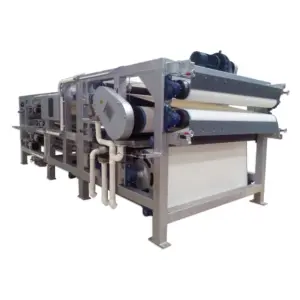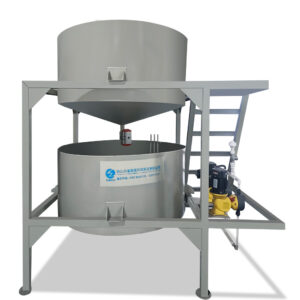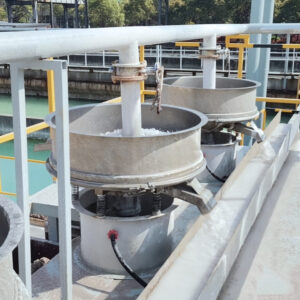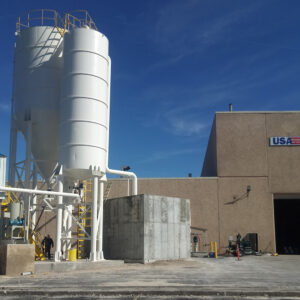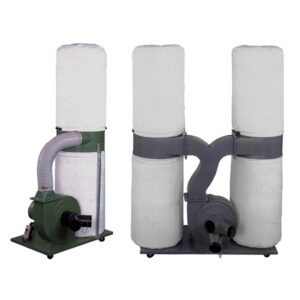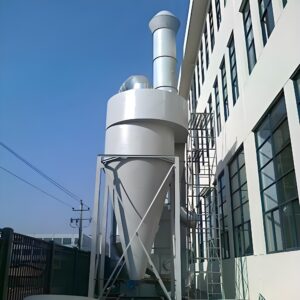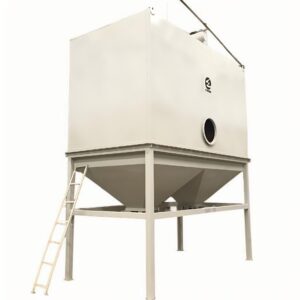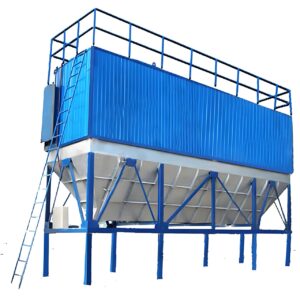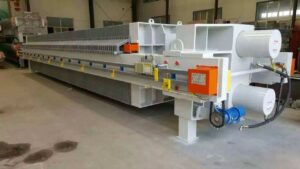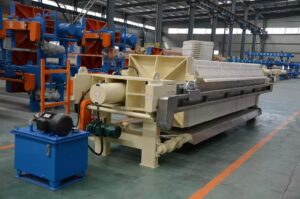Industrial facilities generating wastewater face an increasingly complex regulatory landscape that demands precise adherence to environmental standards. With over 70% of manufacturing companies reporting compliance challenges as their primary operational concern, understanding environmental wastewater compliance has become critical for sustainable business operations.
The consequences of non-compliance extend far beyond financial penalties. Companies risk operational shutdowns, legal liability, and irreparable damage to their reputation in an era where environmental responsibility directly impacts market position. Recent EPA enforcement actions have resulted in penalties exceeding $50 million annually, with some facilities facing permanent closure.
This comprehensive guide provides the technical framework, regulatory insights, and practical solutions necessary to navigate wastewater environmental compliance successfully. PORVOO Clean Tech brings decades of experience in helping industries achieve and maintain compliance through innovative treatment technologies and strategic planning.
What is Environmental Wastewater Compliance?
Environmental wastewater compliance encompasses the legal and regulatory requirements governing the treatment, monitoring, and discharge of industrial and municipal wastewater. This framework ensures that effluent discharged into surface waters, groundwater, or municipal treatment systems meets established quality standards that protect public health and environmental integrity.
Core Components of Compliance Framework
The regulatory structure operates through multiple layers of oversight, beginning with federal standards established by the Clean Water Act and extending through state and local requirements. The National Pollutant Discharge Elimination System (NPDES) serves as the primary permitting mechanism, requiring facilities to obtain specific discharge permits that outline acceptable pollutant levels, monitoring frequencies, and reporting obligations.
Wastewater environmental compliance involves three fundamental elements: permit acquisition, ongoing monitoring, and regular reporting. Each component requires specialized expertise and systematic implementation to ensure continuous adherence to regulatory requirements.
Regulatory Authority Structure
| Level | Primary Responsibilities | Key Requirements |
|---|---|---|
| Federal | Establish baseline standards | Clean Water Act, NPDES permits |
| State | Implement federal programs | State-specific discharge limits |
| Local | Municipal pretreatment | Sewer discharge permits |
Why Are Wastewater Environmental Standards Critical for Industries?
Industrial wastewater standards serve as the cornerstone of environmental protection, preventing contamination that could affect millions of people downstream. The economic implications of compliance extend beyond regulatory requirements, directly impacting operational efficiency, resource utilization, and long-term business sustainability.
Environmental Protection Benefits
Effective wastewater treatment prevents the release of harmful pollutants including heavy metals, organic compounds, and pathogens that can devastate aquatic ecosystems. Research from the Water Environment Federation indicates that proper treatment removes up to 99.9% of harmful contaminants, protecting both surface and groundwater resources.
In our experience working with manufacturing facilities, companies implementing comprehensive water treatment environmental standards report significant improvements in their environmental footprint while often discovering opportunities for resource recovery and process optimization.
Economic Advantages of Proactive Compliance
Companies maintaining strong compliance records experience measurable business benefits, including reduced insurance costs, improved access to capital, and enhanced market positioning. A 2023 industry study revealed that compliant facilities report 15-20% lower operational risks and stronger financial performance compared to companies with compliance issues.
However, the initial investment in compliance systems can be substantial, with treatment infrastructure costs ranging from $500,000 to $5 million depending on facility size and discharge complexity. Strategic planning helps optimize these investments while ensuring regulatory adherence.
What Are the Key Industrial Wastewater Regulations?
The regulatory landscape for industrial wastewater encompasses federal, state, and local requirements that create a comprehensive framework for environmental protection. Understanding these overlapping jurisdictions is essential for developing effective compliance strategies.
Federal Regulatory Framework
The Clean Water Act establishes the foundation for all wastewater regulations, authorizing EPA to set national standards and delegate implementation to qualified state agencies. Industrial wastewater regulations vary significantly based on industry sector, with specific requirements for categories including manufacturing, food processing, chemical production, and energy generation.
Point source discharge regulations require NPDES permits for any facility discharging directly to surface waters. These permits specify exact pollutant limits, monitoring requirements, and reporting schedules tailored to each facility’s unique discharge characteristics.
Industry-Specific Standards
| Industry Sector | Primary Pollutants | Typical Limits |
|---|---|---|
| Manufacturing | Heavy metals, oils | <0.1 mg/L metals |
| Food Processing | BOD, suspended solids | <30 mg/L BOD |
| Chemical | Organic compounds | Varies by compound |
| Energy | Thermal discharge | <5°F temperature rise |
State and Local Requirements
State environmental agencies often establish more stringent standards than federal minimums, particularly in areas with sensitive receiving waters or high population density. Local pretreatment ordinances add another layer of requirements for facilities discharging to municipal treatment systems.
How to Achieve Effluent Discharge Compliance?
Successful effluent discharge compliance requires a systematic approach combining proper technology selection, robust monitoring systems, and comprehensive documentation procedures. The most effective strategies integrate compliance requirements into overall operational planning rather than treating them as separate responsibilities.
Technology Selection and Implementation
Modern wastewater treatment systems must address specific pollutants while maintaining operational efficiency and cost-effectiveness. Primary treatment removes large solids and oils, secondary treatment addresses biological contaminants, and tertiary treatment manages dissolved pollutants and nutrients.
Advanced treatment technologies including membrane bioreactors, reverse osmosis, and electrochemical treatment provide superior contaminant removal but require higher capital investment and operational expertise. The selection process should consider long-term operational costs, reliability requirements, and future regulatory changes.
Monitoring and Documentation Systems
Continuous monitoring systems provide real-time data on effluent quality, enabling immediate response to process upsets or equipment failures. Automated sampling equipment ensures consistent sample collection while reducing labor costs and improving data reliability.
Our experience indicates that facilities with comprehensive monitoring programs experience 40-60% fewer compliance violations compared to those relying on manual sampling alone. Investment in advanced wastewater treatment systems often pays for itself through reduced compliance risks and operational efficiency gains.
Best Practices for Compliance Management
| Practice Area | Key Elements | Success Metrics |
|---|---|---|
| Monitoring | Automated systems, redundant sensors | >99% uptime |
| Documentation | Electronic records, audit trails | Zero reporting violations |
| Training | Regular updates, certification programs | Staff competency scores |
What Are the Main Challenges in Water Treatment Environmental Standards?
The evolving regulatory landscape presents significant challenges for facilities striving to maintain compliance while controlling operational costs. Understanding these challenges enables proactive planning and strategic investment in long-term solutions.
Regulatory Complexity and Changes
The multi-layered regulatory structure creates compliance complexity that requires specialized expertise to navigate effectively. Federal regulations provide baseline requirements, but state and local standards often impose additional restrictions that can significantly impact treatment system design and operation.
Regulatory changes occur frequently, with new contaminants of concern added regularly and existing limits becoming more stringent. PFAS regulations exemplify this challenge, with detection limits dropping to parts-per-trillion levels that require advanced analytical methods and treatment technologies.
Technology and Cost Limitations
Advanced treatment technologies capable of meeting stringent discharge standards often require substantial capital investment and ongoing operational costs. Smaller facilities may struggle to justify the expense, while larger operations must balance compliance costs against other business priorities.
Energy consumption represents a significant operational challenge, with some advanced treatment processes requiring 2-5 kWh per thousand gallons treated. This energy demand creates both cost pressures and secondary environmental impacts that must be considered in system design.
Monitoring and Reporting Burden
Compliance monitoring requires sophisticated analytical capabilities and rigorous documentation procedures. Laboratory costs for required testing can exceed $50,000 annually for facilities with complex discharge permits, while staff time for sample collection and report preparation adds additional expenses.
However, automated monitoring systems and electronic reporting platforms are reducing these burdens while improving data quality and compliance reliability. Investment in comprehensive treatment solutions often includes monitoring and reporting capabilities that streamline compliance management.
How to Select Effective Environmental Water Treatment Solutions?
Selecting appropriate treatment technology requires careful analysis of discharge requirements, operational constraints, and long-term strategic goals. The most successful implementations integrate compliance requirements with operational efficiency and resource recovery opportunities.
Assessment and Planning Process
Comprehensive site assessment begins with detailed characterization of wastewater streams, including flow rates, contaminant concentrations, and temporal variations. This data provides the foundation for technology selection and system sizing while identifying opportunities for source reduction and process optimization.
Regulatory analysis must consider current requirements and anticipated future changes. Environmental water treatment systems typically operate for 15-20 years, making it essential to design for evolving standards rather than just current requirements.
Technology Evaluation Criteria
| Criterion | Considerations | Weighting Factors |
|---|---|---|
| Performance | Contaminant removal efficiency | Regulatory requirements |
| Reliability | Uptime, maintenance requirements | Operational criticality |
| Cost | Capital and operational expenses | Budget constraints |
| Expandability | Future capacity needs | Growth projections |
Implementation and Optimization
Successful implementation requires careful project management, comprehensive testing, and systematic optimization. Pilot testing validates treatment performance under actual operating conditions while identifying potential operational challenges before full-scale implementation.
Ongoing optimization involves regular performance monitoring, preventive maintenance, and process adjustments to maintain optimal efficiency. Digital monitoring systems provide the data analytics necessary for continuous improvement and proactive maintenance scheduling.
What Are the Future Trends in Wastewater Environmental Compliance?
The wastewater compliance landscape continues evolving rapidly, driven by emerging contaminants, advancing treatment technologies, and increasing regulatory scrutiny. Understanding these trends enables strategic planning and investment in future-ready solutions.
Emerging Contaminants and Regulations
PFAS compounds represent the most significant emerging regulatory challenge, with detection limits approaching analytical detection capabilities. These “forever chemicals” require specialized treatment technologies and monitoring methods that many facilities lack.
Pharmaceutical compounds, personal care products, and endocrine-disrupting chemicals are gaining regulatory attention, with several states already implementing monitoring requirements. Future regulations will likely establish discharge limits for these compounds, requiring advanced treatment capabilities.
Technology Advancement and Integration
Artificial intelligence and machine learning are transforming wastewater treatment through predictive analytics, automated optimization, and preventive maintenance scheduling. These technologies enable facilities to maintain optimal performance while reducing operational costs and compliance risks.
Membrane technologies continue advancing, with new materials and configurations improving efficiency while reducing energy consumption. Electrochemical treatment processes offer precise contaminant removal for specialized applications, particularly for emerging contaminants resistant to conventional treatment.
Regulatory Evolution and Enforcement
Enforcement agencies are increasingly utilizing satellite monitoring, drone surveillance, and continuous monitoring requirements to ensure compliance. This enhanced oversight capability makes violations more likely to be detected and prosecuted, emphasizing the importance of robust compliance programs.
State and local agencies are implementing more stringent standards than federal minimums, creating a patchwork of requirements that complicate multi-facility compliance strategies. Successful companies are developing standardized approaches that meet the most stringent requirements across all locations.
Conclusion
Environmental wastewater compliance represents a critical operational requirement that directly impacts business sustainability, regulatory standing, and environmental stewardship. Success requires understanding the complex regulatory framework, implementing appropriate treatment technologies, and maintaining robust monitoring and documentation systems.
The key insights for achieving sustainable compliance include: proactive planning for evolving regulations, strategic investment in proven treatment technologies, comprehensive monitoring and documentation systems, and ongoing optimization through data analytics and process improvement.
As regulatory requirements continue tightening and enforcement capabilities expand, facilities must move beyond minimum compliance toward excellence in environmental performance. This approach not only ensures regulatory adherence but often reveals opportunities for operational efficiency, resource recovery, and competitive advantage.
Future success depends on embracing advanced technologies, developing comprehensive compliance management systems, and partnering with experienced solution providers who understand both regulatory requirements and operational realities. The investment in proper environmental wastewater compliance infrastructure pays dividends through reduced risks, improved efficiency, and enhanced reputation.
What specific compliance challenges does your facility face, and how might advanced treatment technologies address both current requirements and future regulatory evolution? Consider exploring proven wastewater treatment solutions that provide the performance, reliability, and flexibility necessary for long-term compliance success.
Frequently Asked Questions
Q: What is Environmental Wastewater Compliance and why is it important?
A: Environmental Wastewater Compliance refers to adhering to regulatory standards that govern the treatment and discharge of wastewater to protect public health and the environment. Compliance ensures wastewater is treated to remove harmful pollutants before release, preventing water pollution and ecosystem damage. It is important because it helps industries and municipalities meet legal requirements, avoid penalties, and contribute to sustainable water management practices.
Q: What are the key standards and permits involved in Environmental Wastewater Compliance?
A: The primary standards and permits include:
- National Pollutant Discharge Elimination System (NPDES) permits, which regulate direct discharges of treated wastewater into natural water bodies.
- EPA Effluent Guidelines, which provide industry-specific pollutant limits based on technology standards.
- Local discharge and permitting criteria set by local governing agencies.
These standards require continuous monitoring, reporting, and treatment processes to meet pollutant limits and maintain compliance.
Q: What are the common treatment steps to meet Environmental Wastewater Compliance standards?
A: Wastewater treatment typically involves multiple key steps to meet compliance:
- Removal of large debris to protect infrastructure
- Grit chambers to separate grit particles
- Primary clarification to separate solids and organic matter
- Aeration to biologically break down organic pollutants
- Secondary clarification for further solids removal
- Disinfection, often with chlorine, to eliminate pathogens
- Final testing of pH, dissolved oxygen, nutrients, and residual chemicals to ensure permit limits are met
Q: How often should wastewater be tested to ensure Environmental Wastewater Compliance?
A: Testing frequency depends on local regulations and specific permit requirements but typically includes:
- Regular laboratory analyses scheduled semiannually or as defined by the permit
- Monitoring of key parameters like pH, biochemical oxygen demand (BOD), chemical oxygen demand (COD), total suspended solids (TSS), metals, and bacterial content
- Reporting to regulatory agencies to demonstrate ongoing compliance and adjust treatment processes as needed
Q: What challenges do industries face in maintaining Environmental Wastewater Compliance?
A: Key challenges include:
- Keeping up with evolving stricter regulations and technology-based standards
- Managing costs of advanced treatment technologies and facility upgrades
- Ensuring accurate and timely monitoring and reporting
- Handling variable wastewater composition from different industrial processes
- Preventing accidental releases or permit violations, which can result in fines or legal action
Q: How can industries improve their Environmental Wastewater Compliance performance?
A: Industries can enhance compliance by:
- Using advanced treatment technologies tailored to their wastewater characteristics
- Implementing robust monitoring systems for real-time data collection
- Regularly training staff and updating operational practices to meet standards
- Collaborating with regulatory agencies to stay informed on changes
- Conducting internal audits and maintenance to prevent system failures and ensure consistent effluent quality
This approach ensures industries meet Environmental Wastewater Compliance standards effectively, protecting both the environment and their operational viability.
External Resources
- Effluent Guidelines Implementation & Compliance | US EPA – Offers comprehensive details on how the EPA implements and enforces effluent guidelines, focusing on compliance systems, monitoring, and regulatory standards for wastewater dischargers in the United States.
- Effluent Discharge Regulations in Wastewater: Understanding Compliance and Impact – Explains regulatory frameworks and standards for wastewater effluent, including compliance reporting, pollutant monitoring, and enforcement within the context of the National Pollutant Discharge Elimination System.
- A Guide to Wastewater Treatment Regulations and Compliance – Provides an overview of wastewater treatment regulations, ongoing compliance requirements, monitoring, and the consequences of non-compliance for businesses and facilities.
- A List of Regulations in Water and Wastewater – Summarizes major U.S. federal regulations, including the Clean Water Act and NPDES, detailing compliance standards, permit systems, and enforcement mechanisms for wastewater treatment and discharge.
- Environmental Wastewater Regulation Compliance – The Tank Depot – Discusses federal and state-level compliance requirements for septic and wastewater systems, guiding readers through key regulatory standards impacting environmental protection.
- Wastewater and Effluent Compliance Guide – ChemREADY – Delivers practical insights into wastewater compliance, effluent standards, and treatment best practices to meet environmental regulations in English-speaking contexts.

